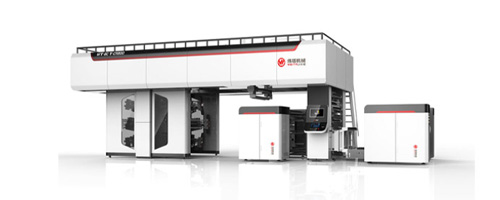 RU
RU
 EN
EN
 CN
CN

Position:HOME > Ink Knowledge

The pattern on the printing plate is prominent, the blank place is concave, through the anilox rollers to transfer ink, generally printed with water-based and UV inks, can reach 400 meters per minute. Flexographic printing is also a kind of letterpress printing.

The printing pattern on the surface of the printing plate is concave, the blank space is protruding, the printing ink layer is very thick, the color is bright, the line is clear, and the saturation is high. Solvent-based ink and water-based ink are available!

The graphic part and the blank part is in the same plane, to the surface of the printing plate inking, only the graphic part of the adsorption of ink, plate work is simple, low cost, suitable for large quantities of printing, mainly using solvent-based inks.

The printing plate consists of a number of small sieve holes, non-graphic part of the mesh is coated with a photopolymer coating sealed, printing adaptability, thick ink layer, three-dimensional sense of strong, bright colors, mainly solvent-based ink.
With the continuous development of the printing industry, UV LED curing technology has gradually emerged as an innovative curing method, showcasing significant advantages over traditional mercury lamp curing technology in terms of efficiency,
Jul 04 2024
UV ink (Ultraviolet Curing Ink) is a type of ink that undergoes rapid curing through chemical reactions triggered by ultraviolet light exposure, widely applied across various printing fields. UV ink has become a crucial choice in the printing industry due
Jul 03 2024
The insufficient adhesion of UV inks is actually not a common phenomenon, given the remarkable advancements UV ink technology has made over the years. Even on non-absorbent materials, UV inks exhibit exceptional adhesion after proper corona treatment. How
Jul 02 2024
In the UV flexographic printing process, the viscosity of the ink is one of the critical factors affecting print quality and effectiveness. Selecting the appropriate viscosity of UV flexographic ink is crucial for ensuring print quality and efficiency.
Jul 01 2024
With the continuous development of printing technology, the performance requirements for inks are also increasing. Besides color, glossiness, and adhesion, environmental protection is also becoming a crucial factor. UV LED ink,
Jun 30 2024
UV Flexo Ink is a special ink used for flexographic printing, which features rapid curing through ultraviolet (UV) light exposure. The research and application of this ink are mainly aimed at improving printing efficiency,
Jun 26 2024
Offset ink and flexographic ink differ significantly in printing methods, ink composition, drying methods, application fields, environmental performance, printing costs, and printing quality. Offset ink is more suitable for high-quality, large-volume grap
Jun 24 2024
UV ink (ultraviolet light curing ink) is an advanced ink that utilizes ultraviolet light sources for curing, and is widely used in various industries due to its
Jun 21 2024
UV ink is widely used in the printing industry due to its rapid curing, high durability, and environmental friendliness. However, poor adhesion of UV ink often becomes a tricky issue in the actual production process, affecting the quality and performance
Jun 19 2024
UV ink (ultraviolet curing ink) is a type of ink that cures through exposure to ultraviolet (UV) light. Unlike traditional inks, UV ink does not require evaporation or chemical reactions for drying during the printing process. Instead, it solidifies insta
Jun 17 2024